| Modern Classic SLR series: Nikon F3 High Speed Camera, 1996/7 |
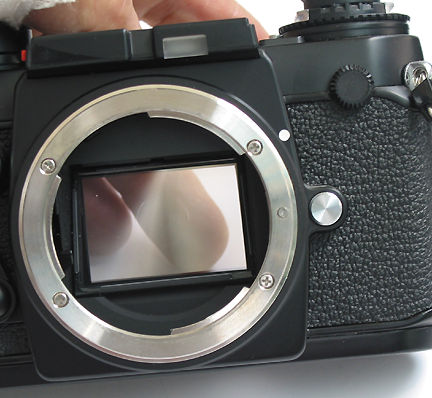 |
|
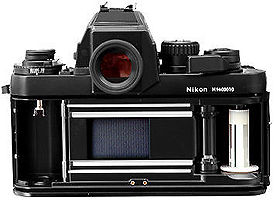 |
Basic operation: Basic operations are virtually identical to how you operate a F3 High-Eyepoint camera with Motor Drive MD-4 attached. |
C). Reflex
mirror: A fixed-type translucent half mirror (70 % ( transmission 30% reflection).
This mirror does
not move up and down*Pellicle Mirror)
D). Lenses retain their aperture setting after mounting. To obtain a bright, maximum
aperture image in the viewfinder, hold down the aperture release button.
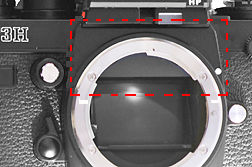 |
|
F). In this case, you can perform stop-down exposure measurement (averaged light metering). The metering range is a fairly weak EV-5 to EV-22 (at ISO 100 f/l .4 lens). See: Operating F3H in Stop-down Metering Mode with various lenses. Credit: You should thank to the persistent requests of my friend (who else ?), Mr. Haweye...
 |
G). If in automatic exposure (aperture priority auto exposure) mode, perform stop-down exposure measurement to check exposure. probably that is why the Depth of Field Preview button is being designed with so much extension from the normal F3. But where is the metering cell locates then ? It is still at the same spot as any other F3 bodies which means TTL flash is still possible but for ambient light metering, you can only operate in stopped down AE mode.
|
H). Backup
mechanical release lever does
not function
when the camera is used with the Motor Drive MD-4H.
I). Type B (matte screen) focusing screen is provided as standard.
Differences between Motor Drive MD-4H and MD-4
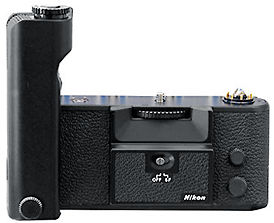 |
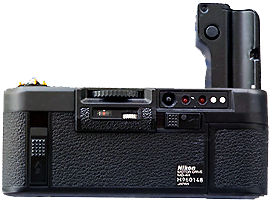 |
1). Motor Drive MD-4H cannot be used with other Nikon F3 camera bodies. |
2). Magazine Back MF-4 (for shooting up to
250 frames) and the Firing Rate Converter MK-1 cannot be used.
3). Data Backs such as MF-14 cannot be used with the MD-4H
as imprinted data becomes blurred.
4). External power terminal cannot be used. (Connecting cord MC-11 cannot be connected
)
5). Confirmation of the LCD exposure information is not possible when using Nikon Remote Cord MC-12B with the
MD-4H. However you can still release the shutter.
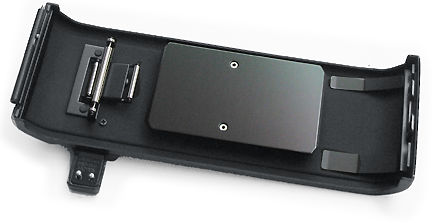 |
6). Continuous exposures of up to 6 frames can be set. Make blank exposures until the frame counter reaches frame one before beginning to shoot. Set the number of film exposures on the Motor Drive's frame counter. |
8). Determines
correct exposure in either automatic or manual exposure mode. In both automatic exposure
mode (aperture-priority auto exposure) and manual exposure, be sure to perform stop
down exposure measurement when shooting.
9). Be sure to attach the optional eyepiece cover (designed for the F90x/N90s. F90
series, F801s/N8808s and F-801/ N8808 cameras) when you shoot with your eye away
from the viewfinder to prevent stray light from entering the viewfinder and affecting
exposure;
9). Focus on the subject and release the shutter. For easier focusing, press the
aperture release button to view the image in the viewfinder with the lens at full
aperture.
 |
10). Rewind the film in the same manner as for Motor Drive MD-4. If the film is automatically rewound in extremely cold or dry conditions (using NiCd Battery Unit MN-2) static electricity charges may cause accidental exposures In these conditions rewind the film slowly by hand with the camera s film rewind crank. |
|
|
| | | Back to Index of Nikon F3 Models Back to Pictorial History of Nikon SLRs |
|
|||||
|
|||||||
| Back to Main Index page of Nikon F3 Site |
Back | to F3 (1980-1982) | Back to Index Page of
F3H site |
| Back | to Pictorial History of Nikon SLR / rangefinders / Nikonos / digital cameras.
|
About this photographic site |
Contributions and Credits |
| Home - Photography in Malaysia |
|
|
| Modern Classic SLR series: Nikon F3 High Speed Camera, 1996/7 |
Copyright © 1999. leofoo ®. MIR Web Development Team.